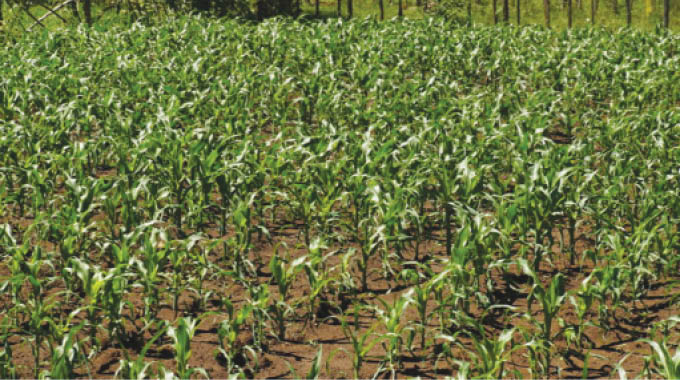
The Sunday News

Dumisani Nsingo, Senior Farming Reporter
FARMERS at one of the prime farming areas, Umguza Irrigation Lots in Matabeleland North Province have quit farming owing to the ever-spiralling cost of production.
Umguza Irrigation Lots chairperson Mr Antony Khepha Dube said a number of farmers have since abandoned their plots while some have scaled down on production due to the rising prices of inputs.
“Farming is no longer viable due to the high cost of inputs such as fertilisers, which now cost over $400 for a bag of 50 kgs. Electricity also went up by 300 percent, the same as water. Most farmers are reeling under huge debts owed to utilities. Zinwa (Zimbabwe National Water Authority) has already sent warning letters to most of the farmers threatening to cut water supplies due to outstanding debts,” he said.
Umguza Irrigation Lots was one of the biggest producers of horticultural produce in Matabeleland North supplying Bulawayo and a number of districts in the province. Some farmers had customers in Hwange. Most of the farmers at Umguza Irrigation Lots are beneficiaries of the Government’s land reform programme aimed at distributing the resource equitably among the majority while also enhancing productivity.
“Some farmers have abandoned farming while most of them have significantly scaled down their production concentrating on cropping small hectarages to at least sustain themselves. We have over 40 farmers at Umguza Irrigation Lots but only 20 are still active and we are faced with a situation whereby workers are even refusing to work due to the pittance salaries they are being offered,” said Mr Dube.
He said most farmers were also failing to till their land owing to erratic fuel supplies. Another farmer, Mr Dumisani Ncube said he has since reduced the hectares he crops due to the high costs of inputs.
“The cost of inputs has risen astronomically and for one to till a hectare it costs about $1 000. I have seven hectares of arable land but I am now utilising only three hectares. We are even failing to pay workers. It’s only now that I’m able to pay them because of this tomato crop I’m picking at the moment thus I’m contemplating on specialising on tomato production. I have abandoned irrigating using sprinklers because they tend to consume more electricity. I have resorted to using the drip irrigation system, which is much better,” he said.
Matabeleland North Agricultural Technical and Extension Services Department provincial officer Mr Dumisani Nyoni acknowledged that farmers at Umguza Irrigation Lots were faced with a myriad of challenges hindering them from operating their agricultural enterprises profitably.
“We were looking at having that area (Umguza Irrigation Lots) being the source of horticultural produce but a number of challenges have over the years affected farmers there, ranging from the cost of inputs, quality of produce and market dynamics. If one has cropped one particular crop and applied all the necessary and requisite inputs and then all of a sudden there is a slump in prices of that produce, it tends to be difficult for them to recover and that has happened many times. For instance, about two years ago a head of cabbage used to cost $1 for two or three but the price drastically fell to $1 for eight and most farmers failed to finance the next crop with some reducing hectarage,” he said.
Mr Nyoni also said failure to obtain the adequate and requisite inputs hampers the quality of the produce subsequently leading to the farmer attaining lower returns.
“If a farmer fails to get adequate inputs, the quality of their produce becomes poor and if they reduce the hectarage the yield is also reduced culminating to very low returns while costs of electricity, water and labour will either remain stable or increase, which virtually erodes all the profits,” he said.
Mr Nyoni said horticultural producers from Matabeleland also suffer competition brought about by produce coming from various highly productive areas in the Mashonaland region.
“There are vendors who import horticultural produce for sale at the vegetable market here in Bulawayo. I know of a number that import tomatoes from as far as Mutoko. The trick with a tomato is its shelf life. Vendors need tomatoes that last eight to 10 days without getting bad thus for a farmer to have such a tomato fruit they need to make sure their soils have balanced soil pH,” he said.
Soil pH is a measure of the acidity or basicity of a soil. It is very important because it directly affects soil nutrient availability. Plant roots can only absorb nutrients after they have been transformed into certain ionic forms. — @DNsingo



